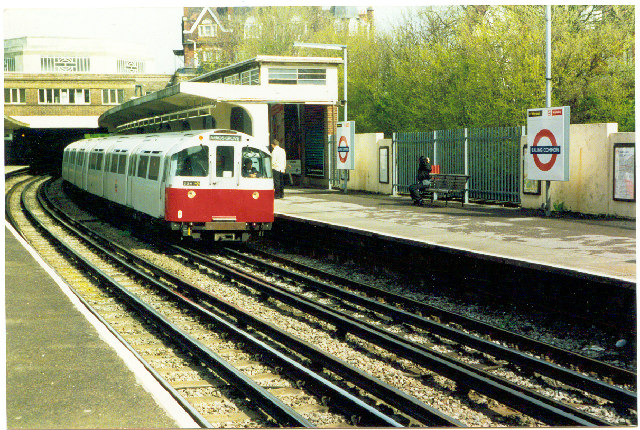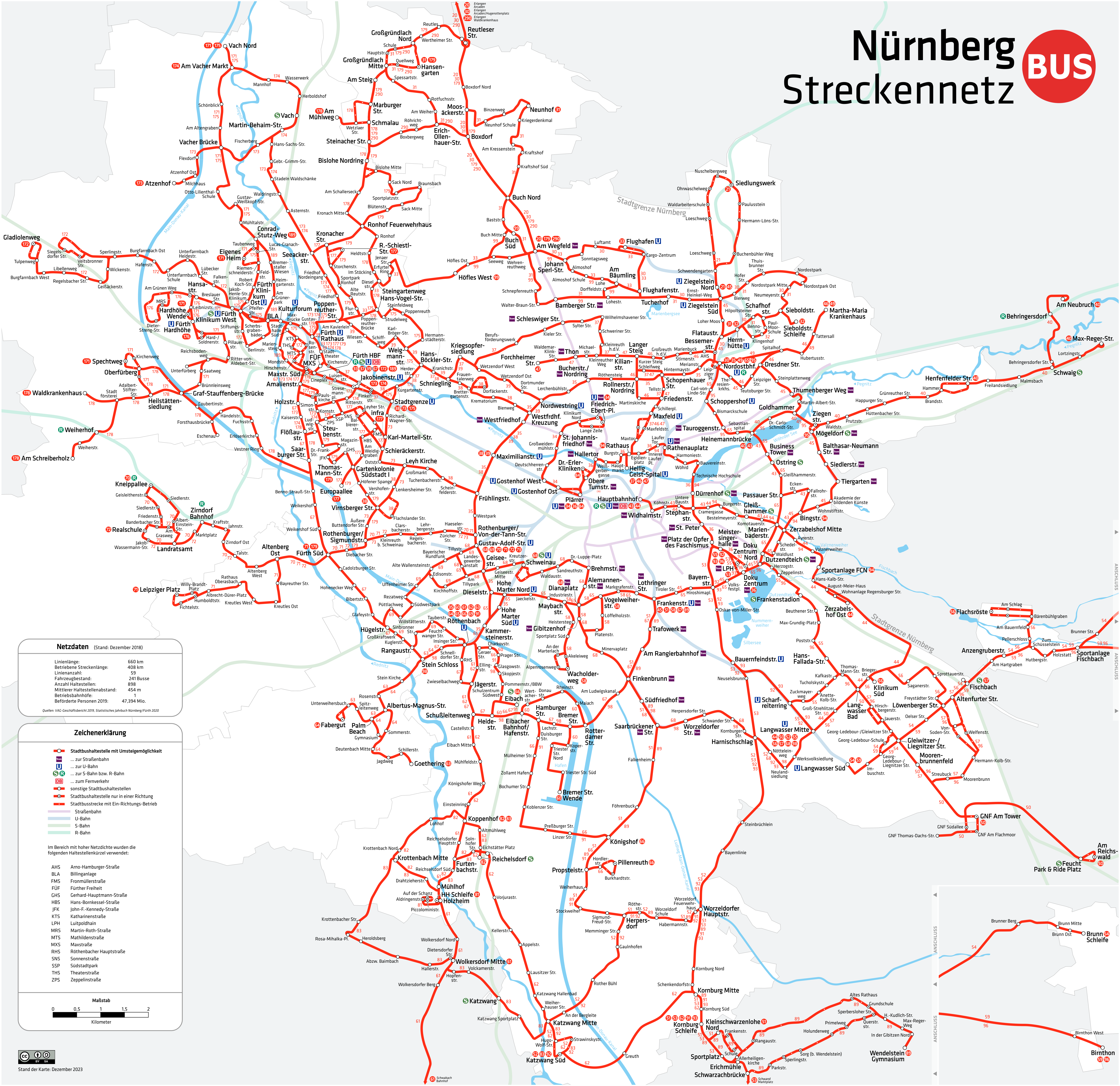|
Siemens Inspiro
The Siemens Inspiro is a family of electric multiple units designed and manufactured by Siemens since 2012 for metro systems. The product was launched on 19 September 2012 at the InnoTrans in Berlin. The first Inspiro entered service with Warsaw Metro on 6 October 2013. Genesis In October 2009, Siemens Mobility started development on a new subway product family. It collaborated with DesignworksUSA on design aspects. The company based its design on Modular Metro vehicles previously produced for Vienna, Oslo and Nuremberg. Metros using Siemens Inspiro technology Poland Warsaw Metro in service 6-car trainsets configuration Germany MVG has ordered first 21 six-carriage trains for the Munich U-Bahn in November 2010 (Class C2.11) with second option of 22 units in 2019 (Class C2.12) and third option of 24 units in 2020 (Class C2.13), bringing the total number to 67. MVG has designated the trains as Class C2, differentiating them from C1, which wasn't based on Inspiro. The ... [...More Info...] [...Related Items...] OR: [Wikipedia] [Google] [Baidu] |
Warsaw Metro
The Warsaw Metro ( pl, Metro Warszawskie) is a rapid transit underground system serving the Polish capital Warsaw. It currently consists of two lines, the north-south Line M1 which links central Warsaw with its densely populated northern and southern districts, and the east-west Line M2, of which the westernmost segment is in construction. A third line ( M3) is still being planned. The system is operated by Metro Warszawskie sp. z o.o., a company owned by the city, and managed by Zarząd Transportu Miejskiego w Warszawie (ZTM Warszawa). The first section was opened in 1995 and gradually extended until it reached its full length in October 2008. There are additional plans to construct two more stations on this north-south line omitted during initial construction due to costs. The contract for the construction of the initial central section of the second line, running east-west was signed on 28 October 2009 and construction began on 16 August 2010. The initial segment of Line M2 w ... [...More Info...] [...Related Items...] OR: [Wikipedia] [Google] [Baidu] |
Variable-frequency Drive
A variable-frequency drive (VFD) is a type of motor drive used in electro-mechanical drive systems to control AC motor speed and torque by varying motor input frequency and, depending on topology, to control associated voltage or current variation., quote is per definition on p. 4 of NEMA Standards Publication ICS 7.2-2021. VFDs may also be known as 'AFDs' (adjustable-frequency drives), 'ASDs' (adjustable-speed drives), 'VSDs' (variable-speed drives), 'AC drives', 'micro drives', 'inverter drives' or, simply, 'drives'. VFDs are used in applications ranging from small appliances to large compressors. An increasing number of end users are showing greater interest in electric drive systems due to more stringent emission standards and demand for increased reliability and better availability. Systems using VFDs can be more efficient than those using throttling control of fluid flow, such as in systems with pumps and damper control for fans. However, the global market penetration fo ... [...More Info...] [...Related Items...] OR: [Wikipedia] [Google] [Baidu] |
London Underground 1973 Stock
The London Underground 1973 Stock is a type of rolling stock used on the Piccadilly line of the London Underground. It was introduced into service in 1975 with the extension of the line to Hatton Cross, followed by a further extension to Heathrow Central in 1977. A total of 86 six-car trains were built. The trains were built by Metro-Cammell between 1974 and 1977, and were refurbished by Bombardier Transportation between 1996 and 2001. They are some of the oldest trains running on the Underground, and in Britain as a whole, second only to the 1972 Stock running on the Bakerloo line. History In the early 1970s London Transport placed an order for a new fleet of trains to replace the 1938 Stock and 1959 Stock vehicles which previously operated on the Piccadilly line. Built between 1974 and 1977 by Metro Cammell in Birmingham, the first unit entered service on 19 July 1975 and the last was introduced by 1977. The trains featured longer cars and larger door space than the p ... [...More Info...] [...Related Items...] OR: [Wikipedia] [Google] [Baidu] |
New Tube For London
The New Tube for London (NTfL) is a type of London Underground train to be built by Siemens as part of its Inspiro family at Siemens's factories in Goole (East Yorkshire) and Vienna, Austria. An initial batch of 94 nine-car trains has been ordered at a cost of £1.5billion to replace 1973 Stock trains on the Piccadilly line, with options for a total of 250 trains allowing replacement of all existing trains on the deep-level Central, Waterloo & City and Bakerloo lines. Planned starting date for the service is 2025, firstly on the Piccadilly line, with a train driver, but equipped for driverless operation. History Background In the late 1990s, the Labour government initiated a public–private partnership (PPP) to reverse years of underinvestment in London Underground. Under the PPP contracts, two private consortiums (Metronet and Tube Lines) would maintain, renew and upgrade London Underground infrastructure over a period of 30 years from 2003. As part of the upgrade wo ... [...More Info...] [...Related Items...] OR: [Wikipedia] [Google] [Baidu] |
Verkehrs-Aktiengesellschaft Nürnberg
The ''Verkehrs-Aktiengesellschaft Nürnberg'' (VAG; Nuremberg Transport Company) is the municipal company responsible for operating the U-Bahn, trams, and buses throughout the city of Nuremberg, in the state of Bavaria, Germany. VAG is a wholly owned subsidiary of ''Städtischen Werke Nürnberg'' (''Nuremberg Municipal Works''), and a member of the ''Verkehrsverbund Großraum Nürnberg'' (VGN; Integrated Transport Association of Greater Nuremberg). History Nürnberg-Fürther Straßenbahn On April 12, 1881, entrepreneur Heinrich Alfes from Bremen received a charter for the manufacture and operation of a ''Pferdebahn'', a horse-drawn streetcar. The first line began operation on August 25, 1881, on the route Staatsbahnhof (current Nuremberg Hauptbahnhof) - Lorenzkirche - Plärrer - Bauerngasse. In 1883, the enterprise was reorganized into a private Aktiengesellschaft with the name Nürnberg-Fürther Straßenbahn-Gesellschaft, or Nuremberg-Fürth Streetcar Company. The company e ... [...More Info...] [...Related Items...] OR: [Wikipedia] [Google] [Baidu] |
Münchner Verkehrsgesellschaft
The ''Münchner Verkehrsgesellschaft'' (MVG; Munich Transport Company) is a municipally owned company responsible for operating public transport in Munich, Germany. It operates buses, the Munich tramway and the Munich U-Bahn. The company is a subsidiary of Stadtwerke München (Munich City Utilities), and a member of the Münchner Verkehrs- und Tarifverbund (MVV; Munich Transport and Tariff Association). MVG Museum The MVG maintains a museum, located at Ständlerstraße The Ständlerstraße is a 3.5 km long street in the south of Munich. It is a part of the exterior ring planned in earlier years. It runs from the Stadelheimer Straße, the corner of Schwanseestraße in Giesing, crosses the A8, is crossed by the c ... 20 near the terminus of tram line 18. The museum contains a collection of some 25 historic trams, buses and utility vehicles from different eras. It opens to the public on alternate Sundays. References External links MVG web site (German language) [...More Info...] [...Related Items...] OR: [Wikipedia] [Google] [Baidu] |
Railway Gazette International
''Railway Gazette International'' is a monthly business magazine and news website covering the railway, metro, light rail and tram industries worldwide. Available by annual subscription, the magazine is read in over 140 countries by transport professionals and decision makers, railway managers, engineers, consultants and suppliers to the rail industry. A mix of technical, commercial and geographical feature articles, plus the regular monthly news pages, cover developments in all aspects of the rail industry, including infrastructure, operations, rolling stock and signalling. History ''Railway Gazette International'' traces its history to May 1835 as ''The Railway Magazine'', when it was founded by Effingham Wilson. The ''Railway Gazette'' title dates from July 1905, created to cover railway commercial and financial affairs. In April 1914 it merged with ''The Railway Times'', which incorporated '' Herapath's Railway Journal'', and in February 1935 it absorbed the ''Railway Engine ... [...More Info...] [...Related Items...] OR: [Wikipedia] [Google] [Baidu] |
DesignworksUSA
Designworks is a global creative consultancy owned by BMW and based in Santa Monica, California, United States. Designworks has two further studios, in Munich, Germany and Shanghai, China. Established independently in 1972 by Charles Pelly, it became a wholly owned BMW Group subsidiary in 1995, and was instrumental in the design of the BMW XL Sports Activity Vehicle and the BMW 5 Series. Other development projects at Designworks have included the BMW electric car, BMW 8 Series (E31) seat, BMW 3 Series (E46), BMW Z8, BMW 7 Series interior, and BMW 100- and 1200 Touring motorcycles, among many others. Origins The design studio was founded in 1972 by designer Charles Pelly with the name DesignworksUSA (renamed Designworks in 2015). The company began in Malibu Canyon with three designers and early customers included Hyster and the Otis Elevator Company. In 1978, the company expanded and moved to Van Nuys, and set up its first sister studio, D2, in Detroit. In 1986, Designworks des ... [...More Info...] [...Related Items...] OR: [Wikipedia] [Google] [Baidu] |
Rapid Transit
Rapid transit or mass rapid transit (MRT), also known as heavy rail or metro, is a type of high-capacity public transport generally found in urban areas. A rapid transit system that primarily or traditionally runs below the surface may be called a subway, tube, or underground. Unlike buses or trams, rapid transit systems are railways (usually electric railway, electric) that operate on an exclusive right-of-way (transportation), right-of-way, which cannot be accessed by pedestrians or other vehicles, and which is often grade-separated in tunnels or on elevated railways. Modern services on rapid transit systems are provided on designated lines between rapid transit station, stations typically using electric multiple units on rail tracks, although some systems use guided rubber tires, magnetic levitation (''maglev''), or monorail. The stations typically have high platforms, without steps inside the trains, requiring custom-made trains in order to minimize gaps between train a ... [...More Info...] [...Related Items...] OR: [Wikipedia] [Google] [Baidu] |
Electric Multiple Unit
An electric multiple unit or EMU is a multiple-unit train consisting of self-propelled carriages using electricity as the motive power. An EMU requires no separate locomotive, as electric traction motors are incorporated within one or a number of the carriages. An EMU is usually formed of two or more semi-permanently coupled carriages, but electrically powered single-unit railcars are also generally classed as EMUs. The great majority of EMUs are passenger trains, but versions also exist for carrying mail. EMUs are popular on commuter and suburban rail networks around the world due to their fast acceleration and pollution-free operation. Being quieter than diesel multiple units (DMUs) and locomotive-hauled trains, EMUs can operate later at night and more frequently without disturbing nearby residents. In addition, tunnel design for EMU trains is simpler as no provision is needed for exhausting fumes, although retrofitting existing limited-clearance tunnels to accommodate the ... [...More Info...] [...Related Items...] OR: [Wikipedia] [Google] [Baidu] |
Pantograph (transport)
A pantograph (or "pan" or "panto") is an apparatus mounted on the roof of an electric train, tram or electric bus to collect power through contact with an overhead line. By contrast, battery electric buses and trains are charged at charging stations. The pantograph is a common type of current collector; typically, a single or double wire is used, with the return current running through the rails. The term stems from the resemblance of some styles to the mechanical pantographs used for copying handwriting and drawings. Invention The pantograph, with a low-friction, replaceable graphite contact strip or "shoe" to minimise lateral stress on the contact wire, first appeared in the late 19th century. Early versions include the bow collector, invented in 1889 by Walter Reichel, chief engineer at Siemens & Halske in Germany, and a flat slide-pantograph first used in 1895 by the Baltimore and Ohio Railroad The familiar diamond-shaped roller pantograph was devised and patented b ... [...More Info...] [...Related Items...] OR: [Wikipedia] [Google] [Baidu] |


.jpg)

.jpg)


